HAN COOK N Seoul Tower (한쿡 N서울타워)
1.3Km 2021-03-18
105, Namsangongwon-gil, Yongsan-gu, Seoul
+82-2-3455-9292
HanCook is an elegant Korean restaurant located in Namsan Seoul Tower serving the traditional beauty and tastes of Korea in a comfortable setting. The buffet-style traditional Korean corner is especially popular among both locals and tourists, offering a variety of more than 30 different dishes in an antique atmosphere. HanCook also boasts a special formal dinner menu only available here. This Korean family restaurant aims to introduce traditional Korean food to the world.
Owl's Cutlet Premium Namsan Seoul Tower(부엉이돈가스 남산서울타워)
1.3Km 2021-04-15
105, Namsangongwon-gil, Yongsan-gu, Seoul
+82-2-318-0518
This is a Japanese cuisine located in Namsan Seoul Tower, Seoul. A restaurant serving cast iron-grilled pork cutlets. The best menu at this restaurant is pork cutlet.
Bukchon-ri Dullegol (북촌리둘레골)
1.4Km 2021-03-19
44 Insadong 14-gil Jongno-gu Seoul
+82-2-747-9700
A restaurant with Korean traditional house-themed interior design. The representative menu is Korean table d''hote. This is a Korean cuisine located in Insa-dong, Seoul.
Nwijo(뉘조)
1.4Km 2024-12-11
27, Insadong 14-gil, Jongno-gu, Seoul
+82-2-730-9311
Nwijo (뉘조) is a Korean restaurant specializing in wild vegetable cuisine. The name ‘Nwijo’ means ‘the god of the silkworm,’ and likens wild vegetables to silkworms in that both can be eaten in their entirety. The restaurant serves original full-course Korean meals that are prepared using hundreds of kinds of wild vegetables, including special seasonal vegetables.
A typical full-course meal starts with delicious pumpkin porridge, followed by seasoned wild vegetables, root vegetable ssam (condiments wrapped in vegetable leaves), slices of boiled meat, and steamed lotus leaf-wrapped rice served with jjigae (Korean stew) and various side dishes. This kind of traditional feast is pleasing to both the eye and the palate and is topped off with sikhye (traditional sweet rice drink). Lunch specials are also available.
Musée de l'Histoire de Corée (대한민국역사박물관)
1.4Km 2022-12-14
Séoul, Jongno-gu, Sejongdae-ro 198
+82-2-3703-9200
대한민국역사박물관은 19세기 말 개항기부터 오늘날에 이르는 대한민국의 역사를 종합적·체계적으로 보여주는 국내 최초의 국립 근현대사박물관이다. 종로구 세종대로에 있는 대한민국역사박물관은 옛 문화체육관광부 건물을 리모델링하여 건립한 지상 8층 건물로, 4개의 상설전시실과 2개의 기획전시실로 이루어져 있다. 이 밖에 세미나실, 강의실, 카페, 문화 상품점, 옥상 정원 등도 갖추고 있다.
Parc de l'histoire Seosomun (서소문역사공원)
1.4Km 2023-09-14
5, Chilpae-ro, Jung-gu, Seoul
+82-2-3396-5852
La zone de la porte Seosomun était auparavant un site de persécution durant le 19ème siècle qui a été transformé en parc. De nombreux catholique furent persécutés sur place faisant de ce site un site sacré pour les catholiques en Corée.
La porte Seosomun constitue un passage vers le marché Chilpae près de la porte Namdaemun.
Le 15 mai 1999 une tour commémorative fut inauguré au centre du parc pour commémorer les martyrs. En 2013, le district Jung-gu a également inauguré le Musée d'Histoire Seosumun.
Kkotbabe Pida (꽃밥에피다)
1.4Km 2023-10-24
3-6, Insadong 16-gil, Jongno-gu, Seoul
+82-2-732-0276
Il s'agit d'un restaurant classé au guide Michelin 2021. Le principal menu du restaurant est le plat bibimbap. Le restaurant est situé dans le quartier de Jongno-gu, à Séoul.
A Flower Blossom on the Rice (꽃,밥에피다)
1.4Km 2023-10-24
3-6, Insadong 16gil, Jongno-gu, Seoul
A Flower Blossom on the Rice est un restaurant de standing respectueux de l'environnement utilisant uniquement des ingrédients issus de l'agriculture écologique. Il s'agit d'un restaurant réputé parmi les vegans notamment pour ses plats bibimbap.
Uraeok (우래옥)
1.4Km 2021-03-24
62-29, Changgyeonggung-ro, Jung-gu, Seoul
+82-2-2265-0151
This 2020 Michelin Guide restaurant specializes in Pyongyang-style naengmyeon (Korean cold noodle). The best menu at this restaurant is pyeongyang cold buckwheat noodles. This Korean dishes restaurant is located in Jung-gu, Seoul.
Jirisan Restaurant (지리산)
1.4Km 2019-08-01
30, Insadong 14-gil, Jongno-gu, Seoul
+82-2-723-4696
Jirisan is one of the representative Korean restaurants in Insa-dong, an area known for its traditional culture. One of the trademarks of this restaurant, besides its amazingly delectable bean and tofu dishes, is a wooden sign that welcome guests into a neat and cozy interior.
Each day, fresh beans are ground at the restaurant to prepare dishes such as soybean paste, soft tofu, and bean-curd tofu stew. Bean-curds are prepared by using seawater, which gives the tofu a unique flavor. The fresh and clean taste of the tofu is one of the many reasons that choosey tofu aficionados flock to the restaurant.
Not just limited to tofu, Jirisan presents customers with a full-range of side dishes such as kimchi, japchae (glass noodles with sautéed vegetables), cucumber kimchi, seasoned seaweed, braised lotus roots, roasted yellow corbinas (a type of fish), leafy greens, bean-curd stew, and more. The restaurant gives visitors a chance to experience a hearty traditional Korean-style meal, but has thoughtfully toned down its seasonings to appeal to a wider audience (particularly those not used to spicy foods).
One of the recommended menu items is the Jirisan set meal, which offers diners the chance to sample foods that are popular in the Jirisan region. Adventurous diners may want to try the sea urchin soup or dried Pollack soup.
The restaurant, originally a traditional Korean house, has been modified over the years to better suit the needs of its customers. The walls surrounding the structure were removed and a glass ceiling was installed to allow guests to enjoy the natural light of the sun as they sample some of the area’s best traditional Korean cuisine.
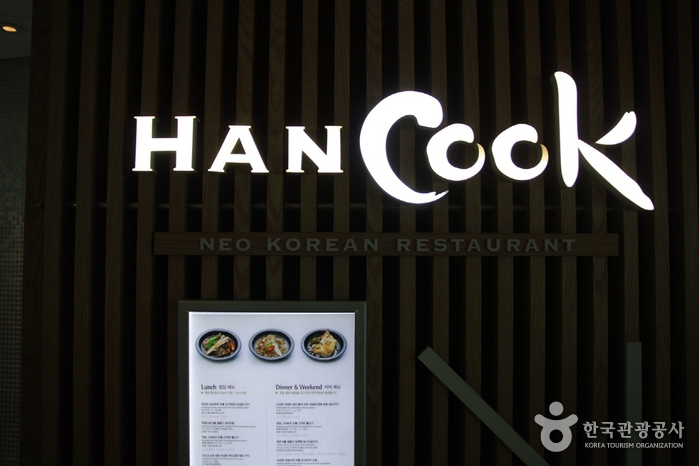
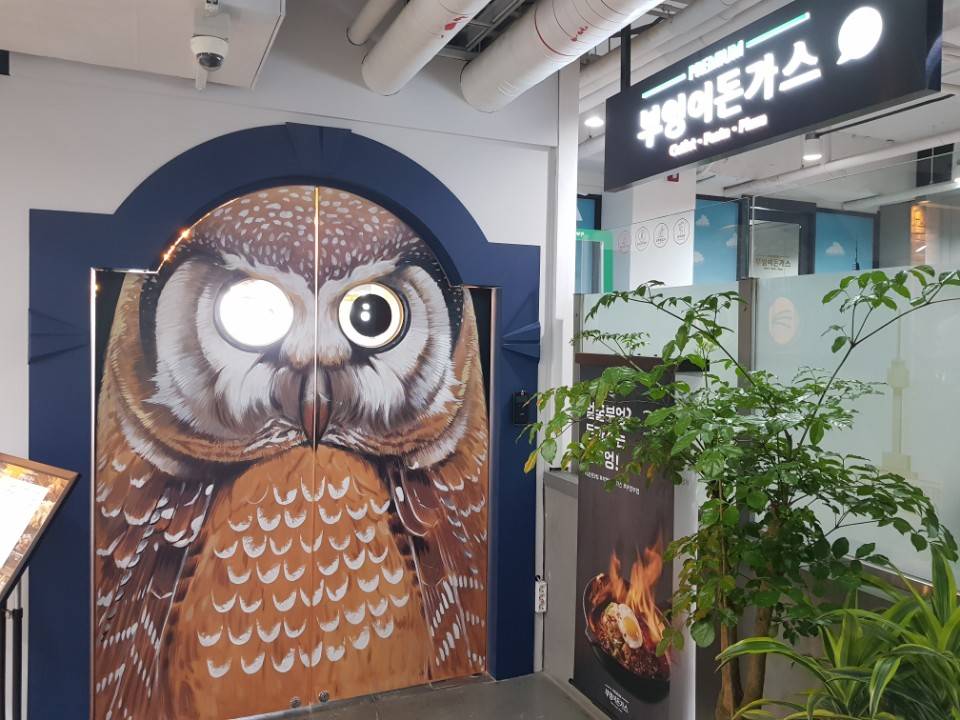
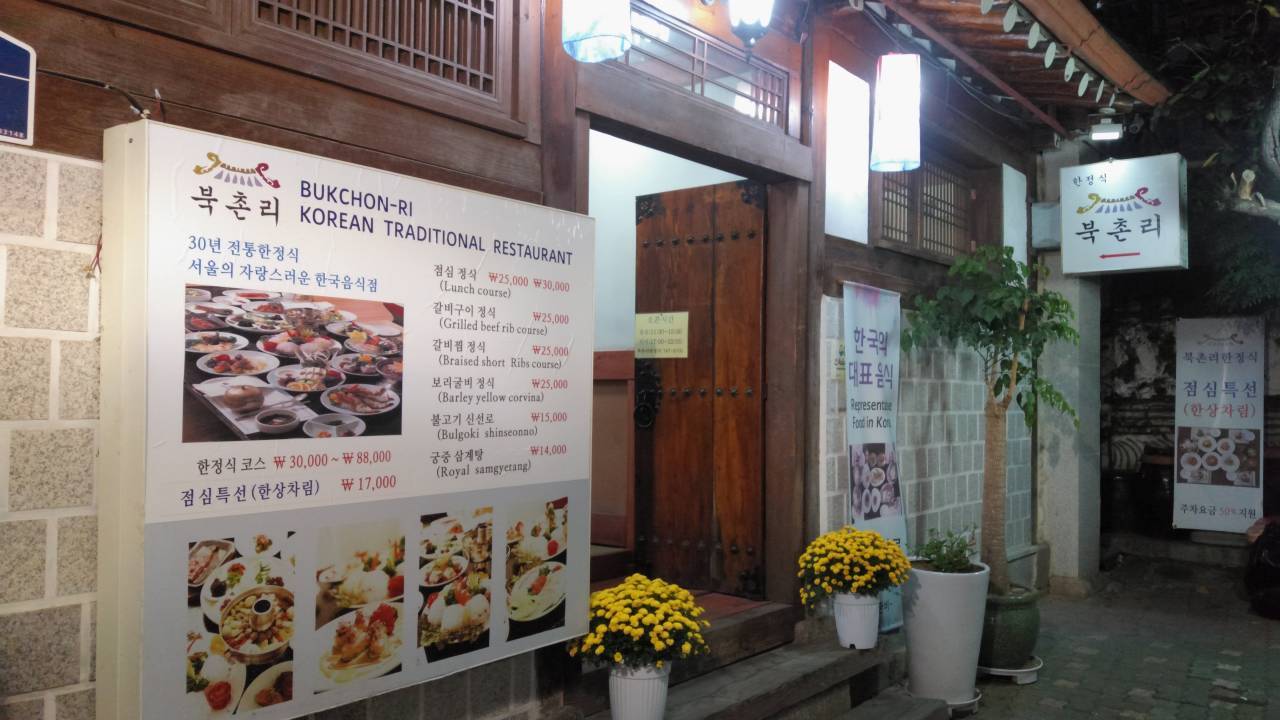
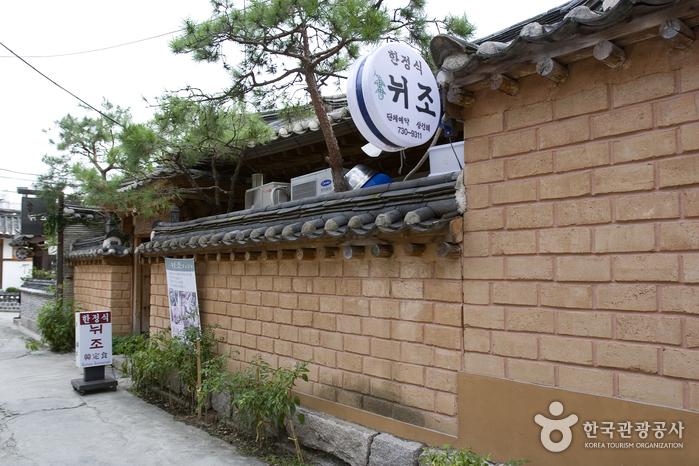
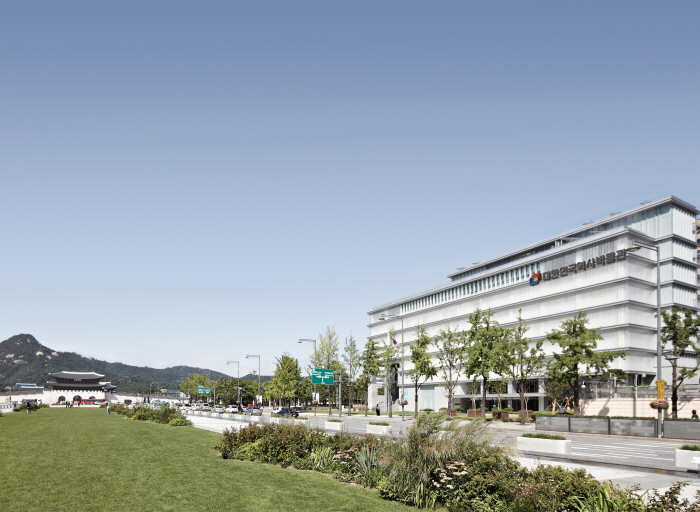
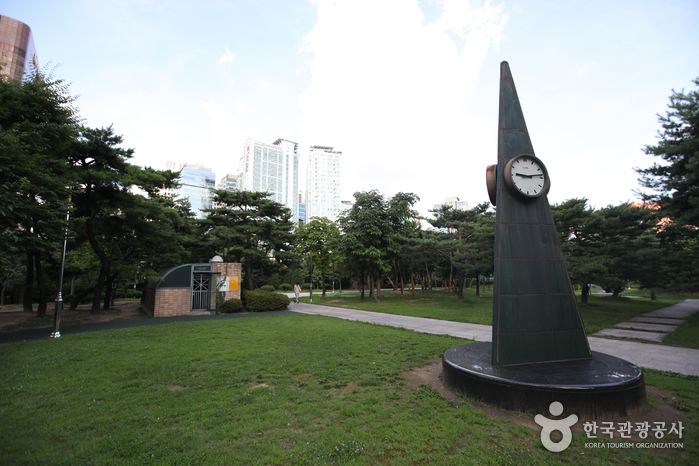
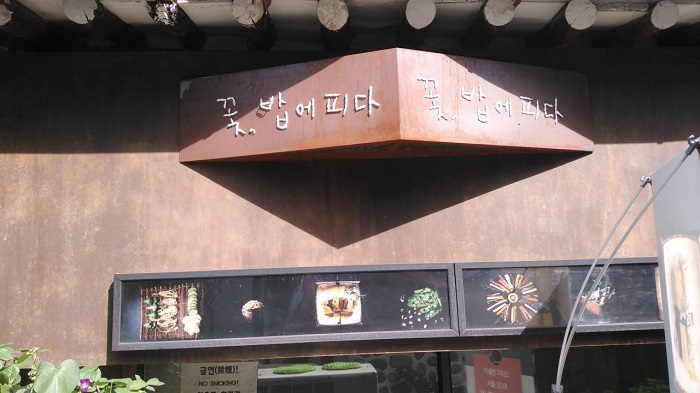
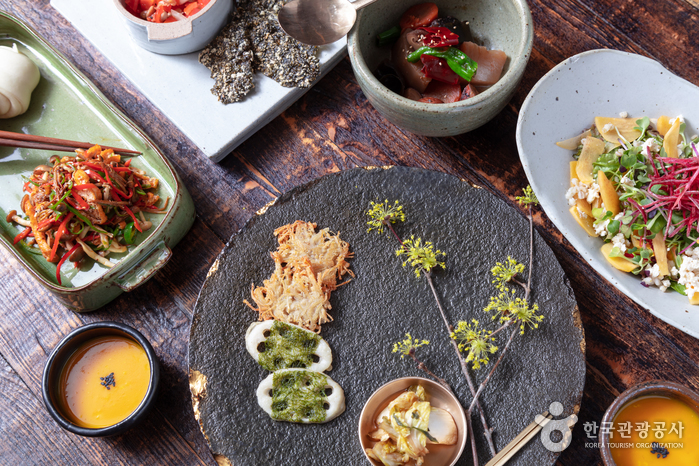

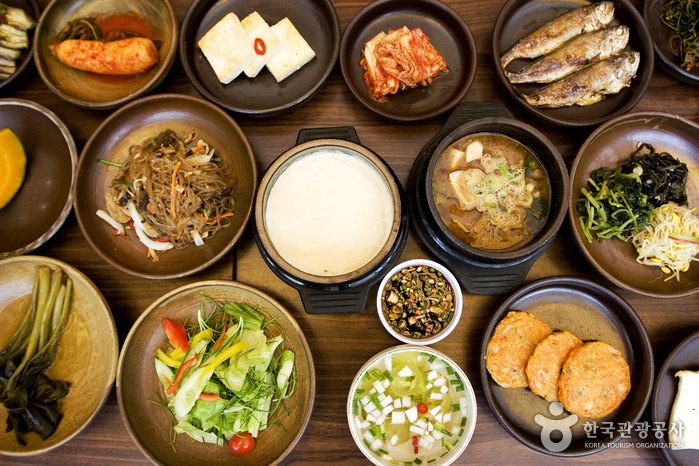
 Français
Français
 한국어
한국어 English
English 日本語
日本語 中文(简体)
中文(简体) Deutsch
Deutsch Español
Español Русский
Русский